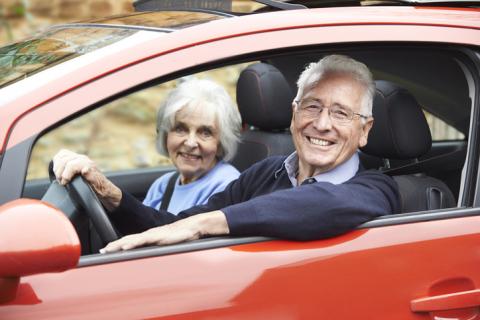Expanding the Life Space of Older Adults
When this happens, the world of an older adult becomes smaller, with a diminished sense of independence and connection in the community. The term that is sometimes used for homebound seniors—“shut-in”—really isn’t far off the mark. The inability to get out can make seniors feel isolated and trapped, soon leading to depression and inactivity.
It’s important to help seniors get back into the community. A study conducted by Chicago’s Rush Alzheimer’s Disease Center found that seniors with a “constricted life space” were at greater risk of memory loss. The study authors defined “life space” as “the extent to which we move through our environments as we carry out our daily lives—from home to garden to workplace and beyond.”
The study, headed by epidemiologist Bryan James, Ph.D., looked at the lives of a group of seniors over the course of eight years. The researchers asked the seniors to record how far from home they typically ventured—outside of their city, outside their neighborhood, or no farther than their own yard or front porch. They found that the seniors with “constricted life space” were almost twice as likely to develop Alzheimer’s disease.
Is this a matter of cause and effect? “The reasons why a constricted life space is associated with an increased risk of Alzheimer’s disease is not clear,” James said. “Certain disease processes in the brain may affect how far we move through the world years before they affect our memory and thinking. Or perhaps life space is an indicator of how much we are actively engaging and challenging our cognitive abilities.”
Whatever the case, says James, “As we continue to search for the answer, we recommend that people—particularly older adults—get out as much as possible and enjoy the world beyond their front doors.”
How can we help seniors get out and about?
Find the right activities. A trip out need not be elaborate, strenuous, or planned far in advance. Lunching with friends, attending one’s faith community, walking in a local park or garden or visiting a gallery can provide a mood boost. Seniors with memory loss continue to benefit from outings, and these days there are more dementia-friendly programs through museums, parks and recreation departments and senior centers. Even shopping provides physical and emotional benefits. A study from The Journal of Epidemiology and Community Health showed that “retail therapy” is a real thing! This makes sense when you consider that since the beginning of civilization, people have congregated in the marketplace. According to the study, there is more good news: You don’t even have to buy anything to benefit from a shopping outing.
Learn about transportation options. Sometimes seniors can extend their driving years with a senior driving class and modifications to the car, such as mirrors and pedal extenders, or a newer car with backup cameras and other updated safety features. But if driving is no longer safe, family and friends might be willing to schedule rides. Check into public transportation and senior transportation programs. Many public transit agencies offer training and orientation classes for senior passengers to build their confidence. Taxi cabs might be an option, and today more older adults are using ride hailing services, such as Uber and Lyft. If a senior uses home care, the caregivers can provide transportation and assistance.
Consider a senior living community. One of the advantages of living in a retirement community, assisted living community or other senior living environment is the transportation they provide. They feature regularly scheduled shopping trips, special events, and transportation to the doctor and other appointments. Seniors in assisted living or memory care feel more confidence with supportive staff along for the adventure. And what a great way to make friends and spend quality time with other residents! Life space mobility and a wider living environment can do wonders for an older adult’s sense of well-being.
